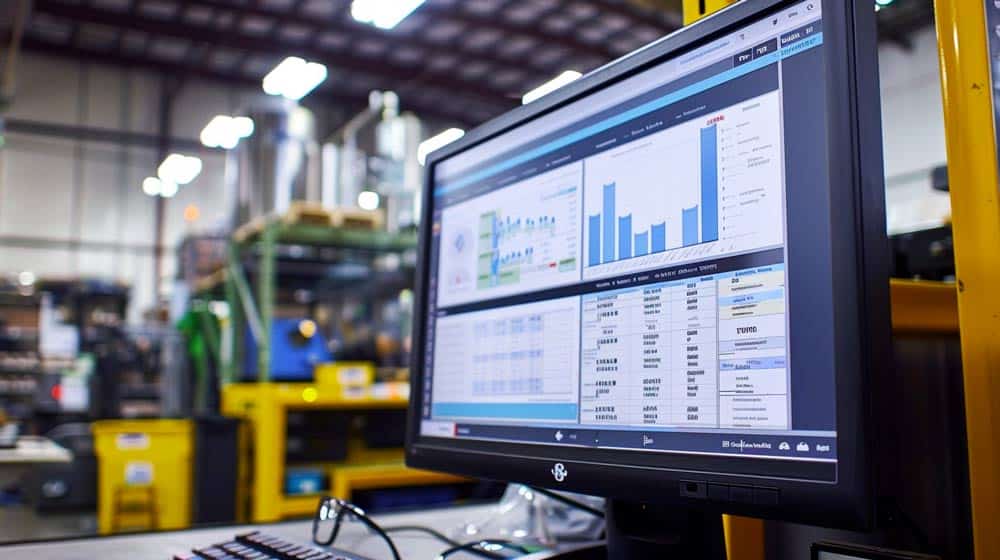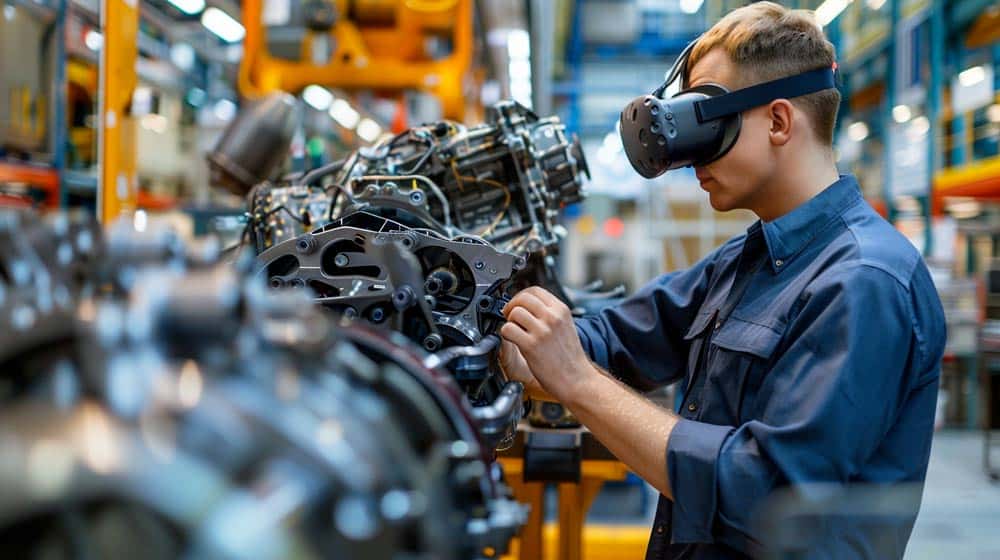Top 5 Quality 4.0 tools for manufacturing
Quality 4.0 is a term derived from Industry 4.0, which first came into use in 2011 at the Hanover Messe conference in Germany.
Much has already been written about Quality 4.0 in the past decade, mostly covering the topic from a theoretical and academic standpoint. It is only in the past few years that Quality 4.0 tools have begun to reach maturity in their development and be adopted by the commercial market.
Early adopters in competitive manufacturing industries with high margins, such as electronics, automotive, and medical manufacturing, have begun to implement Quality 4.0 tools in their plants. Over the next decade, this adoption will expand to other industries as the tools become even more advanced and affordable.
What technologies contribute to Quality 4.0 tools?
Quality 4.0 tools have only been made possible by advances in a number of different areas of technology that characterize Industry 4.0. Note that these are not to be confused with the commercially available tools themselves. They are merely the building blocks that have allowed Quality-specific innovations to be created.
Industrial-specific technology
- The Industrial Internet of Things (IIoT) refers to the integration of interconnected devices and sensors across manufacturing environments, enabling the real-time monitoring, collection, and analysis of data to bolster quality and enhance operational efficiency.
- Edge Computing pertains to the practice of processing data in close proximity to where it is generated, at the network’s periphery, streamlining the response time and supporting immediate data analysis, particularly vital for IIoT applications.
Data science and AI technology
- Advanced Data Science encompasses the application of statistical methods, data visualization, and thorough analysis to vast sets of quality data in manufacturing, incorporating machine learning techniques to extract insights.
- Artificial Intelligence (AI) involves the use of sophisticated algorithms to enhance the accuracy of quality predictions, streamline intricate processes, and boost the capacity for resolving complex issues.
- Machine Learning (ML), a pivotal component of AI, focuses on equipping machines with the ability to learn from data, thereby empowering them to make informed decisions or forecasts based on the amassed manufacturing data.
Other technology
- Extended Reality (XR) serves as a collective term that encompasses various immersive technologies, including Augmented Reality (AR), Virtual Reality (VR), and Mixed Reality (MR), each offering unique interactive experiences.
- Cloud Computing involves leveraging remote servers hosted on the internet to store, manage, and process substantial volumes of quality-related data, thereby facilitating more flexible and scalable approaches to quality management.
- Cybersecurity is dedicated to safeguarding sensitive data and quality control systems, an essential practice in the context of the growing interconnectivity within manufacturing environments.
Who is building Quality 4.0 tools?
In the past, developments in Quality were generally made by engineers who already worked in manufacturing environments. Walter A. Shewhart, the grandfather of Statistical Process Control, worked in the Inspection Engineering Department of the Western Electric Company. In the mid-twentieth century, Toyota advanced quality by leaps and bounds with the concept of continuous improvement. Six Sigma was developed by Bill Smith, who worked at Motorola in the 1980s.
Today, many Quality 4.0 tools have been developed by tech companies who have roots in the technologies in the list above, not necessarily a background in manufacturing. These tech companies have the benefit of absolute focus on the products they are developing, and agility to respond to demands from the marketplace.
Many large manufacturers also have divisions dedicated to Industry 4.0 and digital transformation, with some building tools of their own for specific use cases.
Top Five Quality 4.0 tools
1. Predictive quality software

Type: Software
Technology used: Advanced data science, artificial intelligence, machine learning, cloud computing, cybersecurity
Stage in the process used: Operations
Main uses: Preventing defects and accelerating root cause analysis
Predictive quality is new type of software that is purpose-built to apply machine learning and advanced statistical methods to manufacturing data in real time. It ingests process, test, and other data related to quality from the manufacturing shop floor. The massive volume of data ingested is then analyzed using specific machine learning algorithms built into the platform. All this happens in the background, while users interact with a visual, web-based platform. Users such as quality or process engineers can configure the platform to recognize incoming data in the way that best describes their process. The key features of a predictive quality software solution include:
- Defect prediction: Algorithms monitor incoming machine signal data for any variations from their normally functioning behavior. When an anomaly is detected, the application alerts engineers in the platform, or through workplace collaboration software like Microsoft Teams. This allows potential quality issues to be averted before they impact production.
- Automated root cause analysis: When a part fails an inspection or test, the predictive quality software provides a prioritized list of likely contributing factors to the failure based on data from machine signals.
- On-demand capability metrics reporting: Traditional SPC data can be viewed for current or historical periods and reports can be generated instantly to save time manually analyzing data.
- Part history exploration: Any single product’s production and test history can be viewed in isolation to understand a single cycle.
A predictive quality solution such as LinePulse can ingest data generated from any provider’s software or devices. This means it can be implemented in any manufacturing environment regardless of the hardware or software they already use. If enough data is already being collected, applying predictive quality software requires minimal intervention.
2. Machine vision quality inspection

Type: Hardware and software
Technology used: Artificial intelligence, edge computing, IIoT, cybersecurity (could also include cloud computing)
Stage in the process used: End-of-line or in-process testing
Main uses: Making visual inspection faster and more accurate
Machine vision inspection refers to the use of machine learning and computer vision technologies to automate the inspection process. It allows machines to interpret, analyze, and make decisions based on visual input, much like human vision. A vision inspection system consists of a camera, image-processing hardware, AI software, and a user interface.
A set of training data is used to teach the AI model what to look for, which involves showing it numerous examples of both good and defective items so it can learn to distinguish between them. As the AI processes more images, it continues to learn and improve, adjusting its parameters to enhance accuracy and adapt to new variations in the objects it inspects. Machine vision can be used for:
- Verifying complete assembly: In cases where complete assembly can be confirmed visually, machine vision can identify products that are missing pieces.
- Identifying visual defects: Whether it be a scratch in a coat of paint, or incorrect product dimensions, machine vision can quickly identify which products must be scrapped or reworked.
AI-powered vision inspection systems are often integrated with broader manufacturing or production systems. This integration enables the system to communicate inspection results in real time, triggering actions such as alerting operators, rejecting defective products, or adjusting manufacturing processes.
3. Advanced Quality Management System (QMS) software

Type: Software
Technology used: Advanced data science, cloud computing, cybersecurity (Can also include AI/ML or IIoT, depending on the vendor)
Main uses: Tracking quality events and compliance
Stage in the process used: Quality event post-mortem or during an investigation
QMS Software is not new, and older QMS software is limited in its ability to improve quality metrics. It began as a way to digitize handwritten records about quality incidents and compliance documents. Today, many providers are expanding their capabilities to add more value by including Quality 4.0 features such as:
- Cloud-based functionality: The adoption of cloud-based QMS solutions allows organizations to manage their quality processes more efficiently, collaborate across different locations, and access their QMS from anywhere.
- Automated workflows: AI and ML are being incorporated into QMS to automate routine tasks, analyze trends from historical data, and predict outcomes.
- Internet of Things (IIoT) integration: Connecting QMS with IIoT devices improves the speed and accuracy of quality data collection. Previous generations of QMS relied on manual data entry which is prone to error.
- Predictive quality integrations: Some QMS software can integrate with predictive quality tools, further streamlining data collection and speeding up root cause analysis.
QMS software that will retain the best value will be those that integrate effectively with other Quality 4.0 tools like predictive quality, and/or integrate with real-time data. It is important to assess different QMS solutions, since many are on the market and may make similar claims with vastly different capabilities.
4. Digital twins for process design

Type: Software
Technology used: Artificial intelligence, machine learning, edge computing, IIoT, cloud computing, cyber security
Main uses: Design for manufacturability and process testing
Stage in the process used: Design
A digital twin is a virtual model of a manufacturing process and/or product being manufactured. Digital twins are especially helpful in situations where extensive testing or experimentation is needed. Digital twins can be used for:
- Designing products for manufacturability: Products can be “tested” even before a prototype is built, meaning that designers can ensure better manufacturability, reliability, and performance of their designs
- Process design and optimization: Different parameters, such as production layouts, machine settings, and even materials can be tested quickly, without incurring any extra costs, which can result in a more robust process that is less likely to produce defects.
- Monitoring production processes: Digital twins can visualize and monitor an ongoing process to provide easy access to data that can guide decision-making.
Digital twins used to monitor production processes often require an expert to set up and administer. There are challenges to implementing digital twins, including integrating with existing systems on the shop floor, and getting data that is precise and granular enough to provide accurate results. Not every plant is advanced enough yet to benefit from the value digital twins can provide on the operational or quality side. Currently, their best value is in assisting product and process design.
5. Extended Reality (XR) systems for quality

Type: Hardware and software
Technology used: Extended reality, artificial intelligence, edge computing, IIoT, cybersecurity
Main uses: Guiding manual inspection and processes
Stage in the process used: Operations or quality checks
Augmented Reality (AR) offers innovative ways to enhance the abilities of humans in areas that cannot yet be automated. Here are some ways AR can be used for quality control:
- Providing work instructions: AR can display step-by-step instructions or checklists directly in the field of view of a line engineer or quality control inspector, ensuring that all necessary procedures are followed for their work or test station.
- Aiding manual inspection: AR can overlay digital models or images onto physical products to compare them against the correct specifications.
- Visual documentation: AR allows quality inspectors or engineers to capture annotated, visual documentation of their findings, which can provide better data to a QMS.
At the time of writing, extended reality applications are still in the early stages of adoption in manufacturing. It is anticipated that this solution will mature to better integrate with other Quality 4.0 tools and become more affordable in the coming decade.
Adopting Quality 4.0 tools
Every production environment will have different needs when in comes to improving their quality. It is important to consider a few key questions when evaluating your need for these tools:
- Do I have the required data collection systems in place to enable these tools to be effective?
- Do I have the right leaders on the shop floor that can learn and implement new tools?
- What are my quality improvement KPIs, and what degree of improvement am I looking for?
- Will my investment in this new tool save me money in the short and long term?
Share on social: